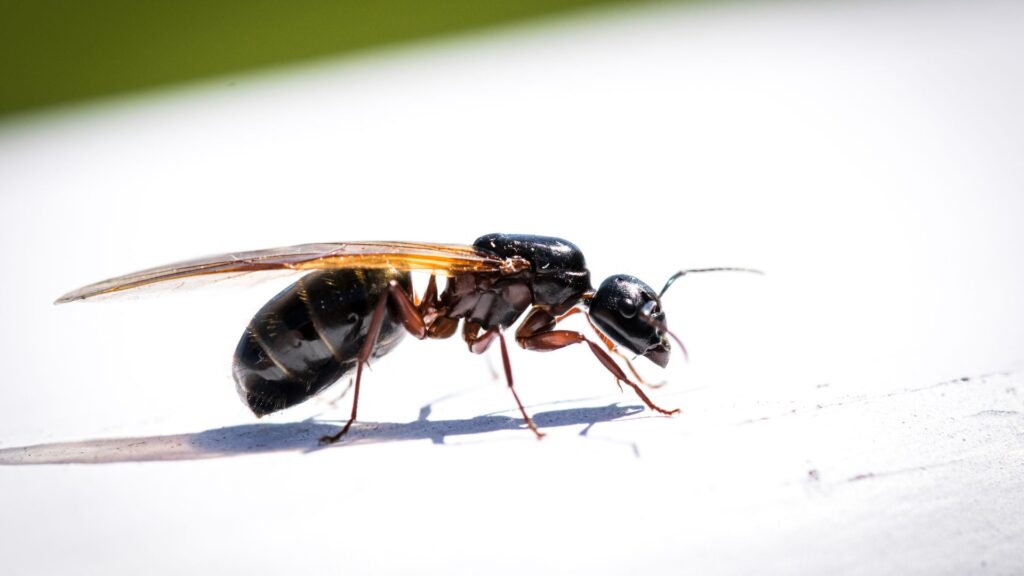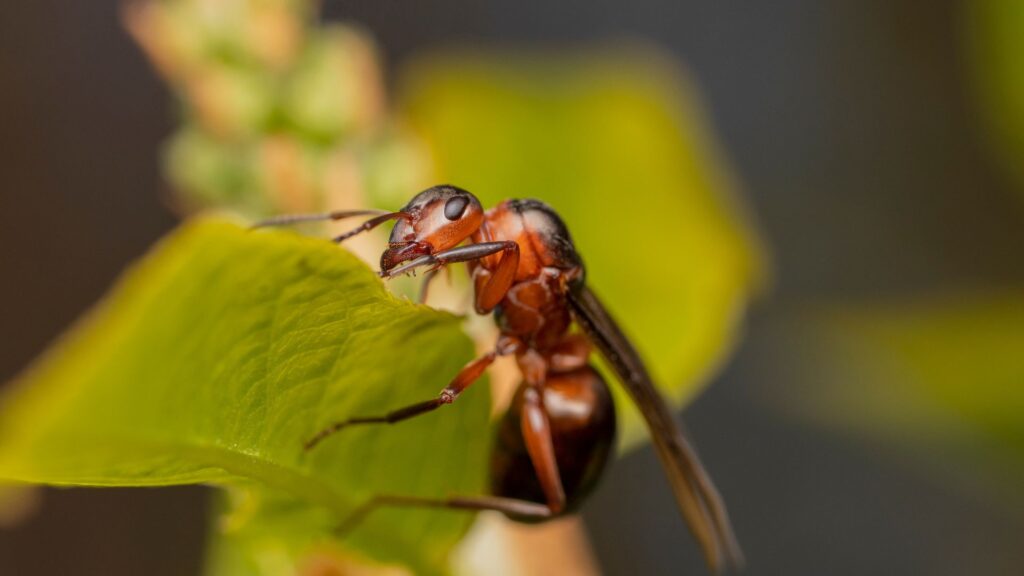
Flying Ants Vs Termites | Learn Facts And Tips To Eradicate Them
When dealing with an infestation of winged insects around your home, distinguishing between flying ants vs termites is crucial.
Although the two pests may appear similar at first glance, understanding their essential differences can significantly impact how you approach pest control.
Characteristics of Flying Ants and Termites: How to Identify the Pest Infesting Your Home
Body Structure – Winged Ants Vs Termites Characteristics
One of the quickest ways to tell the difference between these insects is by their body structure. Flying ants have narrow waists and bent antennae, while termites have straight antennae and broad waists.
Additionally, termite wings are all equal in size, while flying ants have one pair of larger wings in front and a smaller pair behind. If you can get a close enough look at the insect’s body, these features will help you distinguish between the two.
Behavior – Protect Your Landscape
Another way to differentiate between termites and flying ants is by their behavior. Flying ants are often seen foraging for food, while termites stay hidden within walls and wood structures.
If you spot insects swarming around your garbage cans or picnic table, they are likely flying ants. However, if you notice a pile of sawdust or mud tubes near your home’s foundation, you may deal with termites.
Damage – Best Termites and Flying Ants Solutions
Both flying ants and termites can cause damage to your home, but the extent of the damage can differ. Flying ants do not eat wood so they won’t damage your home’s structure. However, if an ant colony is present, they could attract other pests like spiders or birds that can cause damage.
Termites, on the other hand, feed on wood and can cause severe structural damage over time. If you suspect you have termites, acting quickly to prevent further damage is essential.
While these insects may share a similar appearance, critical differences between these pests can help you identify which one you’re dealing with. By understanding each insect’s behavior and body structure, you can take the appropriate steps to prevent and eliminate infestations on your property.
If you suspect a pest problem, it’s always best to consult a professional pest control service to ensure effective treatment.
Prevent Flying Ants

The best way to prevent flying ants on trees is to keep the environment around them clean and healthy.
- Pruning dead branches, removing debris, and keeping the tree free of damage can help reduce the chances of flying ants nesting in them.
- Additionally, avoiding excessive fertilizer use and pest control measures that are harsh or overly toxic can also be beneficial in preventing flying ants from settling on your trees.
- Also, spraying a horticultural oil or insecticidal soap will help prevent flying ants from residing in your trees.
- Regularly checking the tree for signs of infestation and treating any affected areas as soon as possible can stop an ant problem before it spreads further.
How Can I Get Rid Of Flying Ants?

Very often, these pest nests are difficult to find. They prefer areas that are easily accessible, close to sources of moisture and food, safe from predators (such as birds and lizards), and safe from floods, heat, and other environmental stressors.
One of the only ways to eliminate flying ants is to find and treat the nest directly. But finding the nest is the hardest part. Here are their favorite places to nest:
- Attic insulation
- Wall cavity
- Under bathtubs, windows, and door frames
- Rotten tree stump
- By the old wooden fence
- Debris of almost any kind
- Under the mulch
Get Rid of Flying Ants | Flying Ants Vs Termites
The best way to eliminate flying ant problems is to call a professional to identify nesting sites, apply treatment, and take preventative measures at home. If you’ve noticed flying ants on your trees, it may be time to take action. Here are some practical tips and techniques to help you get rid of flying ants:
- Identify the cause of the infestation. Here are some common causes for flying ant infestations in trees: overcrowding, undisturbed soil, decaying wood, or a leaky irrigation system.
- Prune your trees regularly to reduce the number of sites where flying ants can hide. Remove dead limbs and remove rotting bark from the tree trunk and branches.
- Regularly inspect your trees for signs of infestation, such as swarms of flying ants, trails of sawdust, or small holes in the bark.
- Use a pesticide specifically designed to control flying ant infestations. Make sure you follow all label instructions when applying these products.
- Set out bait traps that will attract and kill adult flying ants before they can lay eggs and start new colonies. Look for traps that contain a sweet food attractant and insecticide, so they will lure the ants in. Place the traps near trees where you’ve seen large numbers of flying ants.
Get Professional Assistance

It’s crucial to hire a professional pest control service when dealing with flying ants vs termites infestations for several reasons.
First, professionals have the expertise and tools to identify and treat pest infestations effectively. Second, attempting to handle a pest problem on your own can be dangerous and may result in exposure to harmful chemicals and ineffective pesticides.
Finally, professional pest control services can save you time and money in the long run by preventing the need for costly repairs due to structural damage caused by pests. Hiring a professional is the best way to ensure that your home or business remains pest-free and safe.
Contact our experts to learn more about this pest and how to protect your trees adequately. Our services are based on proven methods and are available at affordable prices. Additionally, we use the latest technology to ensure our treatments are effective and safe for the environment and your family.
